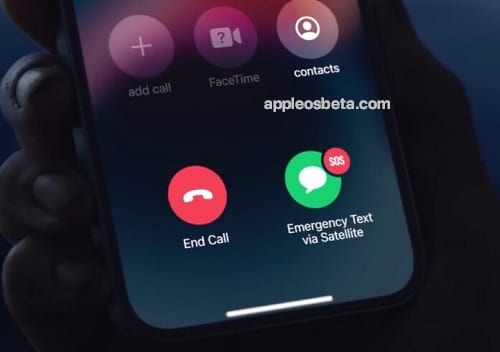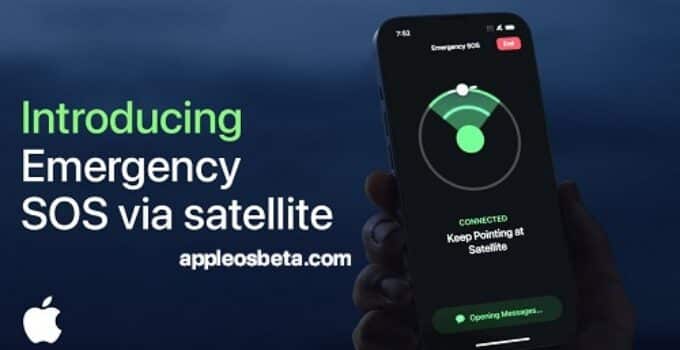iPhone 14, how does SOS emergencies via satellite work? As widely expected, for the first time the iPhones 14 (both standard and Pro models) support the new SOS Emergency via satellite function. It allows the user to send a message requesting help and location coordinates in an emergency, even when there are no Wi-Fi networks or cell phone networks.
iPhone 14, all you need to know in one article
At launch in November, SOS Emergenze via satellite will be available exclusively in the United States and Canada. Unfortunately, during the Far Out presentation on Wednesday, September 7, Apple executives did not provide information on the timing of the release in other countries as well.
Where it works, availability and prices
When the user is outside of any type of network, whether it is Wi-Fi or even a traditional cellular network, he can use the emergency SOS function in case of danger. Apple states that the feature is designed to be used in open spaces and with an unobstructed view of the sky, so performance may be affected in the presence of nearby buildings or trees.
Since it will initially only be available in the US and Canada, iPhone users visiting these countries can take advantage. There are exceptions though, because iPhones sold in China, Hong Kong, and Macau don’t have this feature. Finally, Apple specifies that Emergency SOS may not work in places that are above 62 degrees of latitude, therefore the northern areas of Canada and Alaska.
As for prices, Apple has stated that the SOS Emergency via satellite service is free for two years for all buyers of an iPhone 14. However, the multinational has not disclosed how much it will cost later for those who intend to extend the service.
Just messages, no phone calls
The satellite connection for emergencies of the iPhone 14 allows you to send only short text messages, basically predefined, including the coordinates of the position, to the rescue centers. Calls cannot be made.
When the function is activated, the iPhones 14 display a short series of questions on the screen that in a few taps allow the user to define the situation, danger and request for first aid. This information and location are compressed with an Apple algorithm that makes the message three times smaller, this to speed up transmission as much as possible.
The request will be sent directly if the user is in an area where the emergency services can receive SOS Emergency messages. Otherwise, the message is delivered to a forwarding center managed by Apple-trained specialists who will make an emergency call on behalf of the user.
Connect iPhone 14 to satellite and communication times
To work, iPhone must connect directly to a satellite in orbit: Apple has created a screen that allows the user to view the closest and available satellite to point iPhone 14 in the right direction.

Apple claims that if the user has an unobstructed view of the sky, a short message can be sent within approximately 15-20 seconds. But in less ideal conditions, such as cloudy skies, in the presence of buildings and trees, the sending operation could take several minutes.
Integration with Where is and accident detection
Apple always integrates hardware, software and services to the maximum, it is not surprising that SOS Emergencies is already integrated since launch with the Where is location platform, Find My in English and also with the new incident detection function.
Taking advantage of satellite connectivity, iPhone 14 users can share their location via Where Is, even when Wi-Fi and cellular networks are not available. Undoubtedly a useful function that allows you to inform your loved ones even during camping, hiking and traveling to remote areas.
Both Apple Watch 8 and iPhone 14 are equipped with new accelerometer and gyroscope that can detect car accidents. In the event of an accident, iPhone 14 and Apple Watch 8 enter emergency mode and require the user to tap or slide the screen to deactivate it, thus verifying the state of health. If the user is unconscious or cannot respond, the distress call is sent, first of all via cellular network or Wi-Fi, in the absence of both instead via satellite SOS Emergencies.



